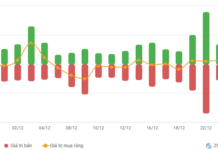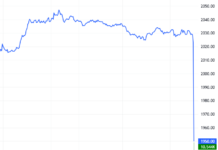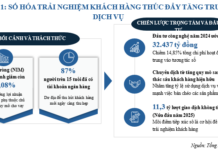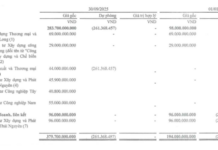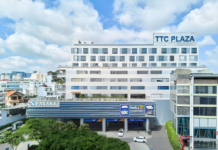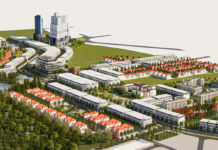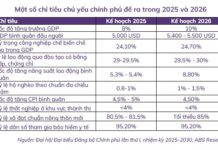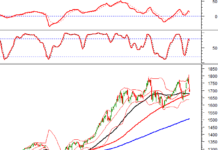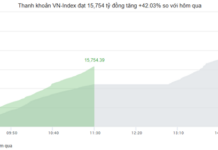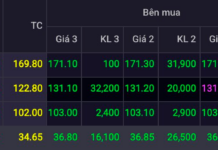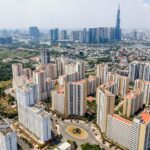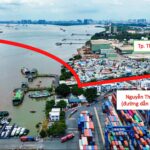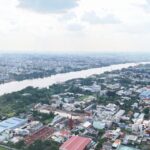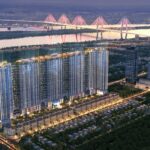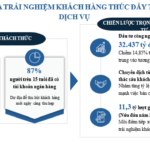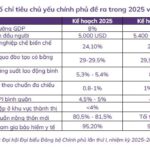Starting August 23, the Bình Triệu 1 Bridge Clearance Enhancement Project in Ho Chi Minh City officially commenced, with an anticipated completion date of late November 2025.
This project stands as a complex endeavor, unprecedented in Vietnam.
Vietnamese Engineers Take the Lead
Employing a synchronized hydraulic lifting system, the method allows for elevating the entire structure, weighing tens of thousands of tons, without the need for dismantling or new construction. The intellectual core of the Bình Triệu 1 Bridge clearance enhancement project lies in the survey and design phases, expertly handled by Vietnamese engineers.
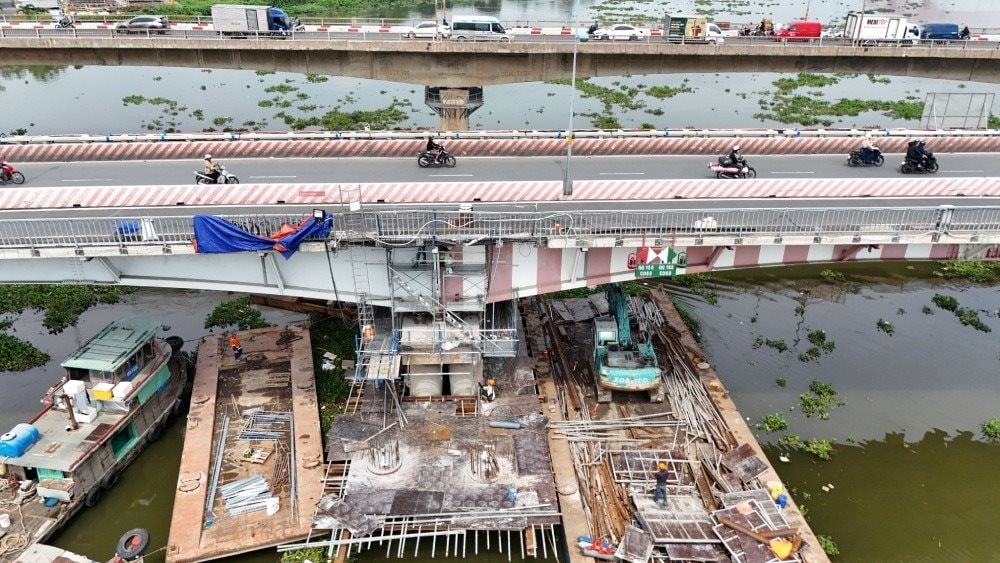
Bình Triệu 1 and 2 bridges serve as vital gateways connecting Ho Chi Minh City with Binh Duong province and the Southeast region. Constructed before 1975, after numerous repairs and expansions, the bridge now faces limitations with a clearance of only 5.5 meters, below the standard 7–9.5 meters, hindering large-capacity vessels from accessing Saigon Port.
With a total investment of approximately 133 billion VND, the bridge enhancement project aims to elevate the entire 11,000-ton structure by over 1 meter.
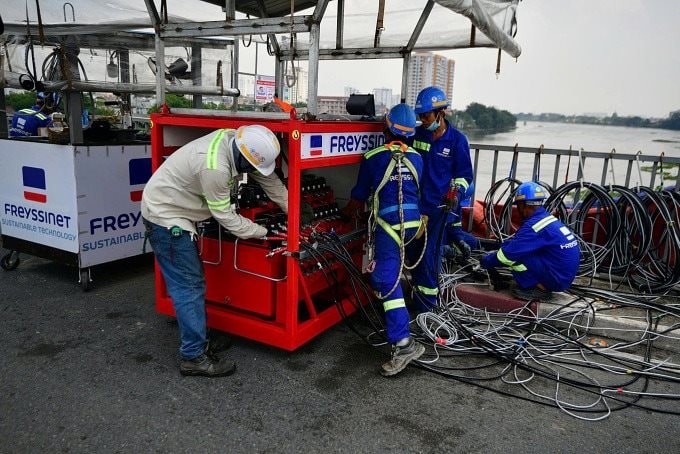
Over 100 engineers and workers are collaborating to operate 106 hydraulic lifts positioned beneath the bridge, including 76 with a 400-ton capacity and 30 with a 500-ton capacity. All are interconnected with sensors and controlled via a central computer, maintaining an error margin of less than 1 mm. The bridge elevates by 4-8 cm daily, with continuous vibration monitoring.
The bridge consists of 16 concrete spans and three main steel spans. During the 2010 renovation, the contractor connected them into 4 continuous spans, each 140 meters long. The lifting process proceeds sequentially from span 1 to 4, then repeats, ensuring uniformity.
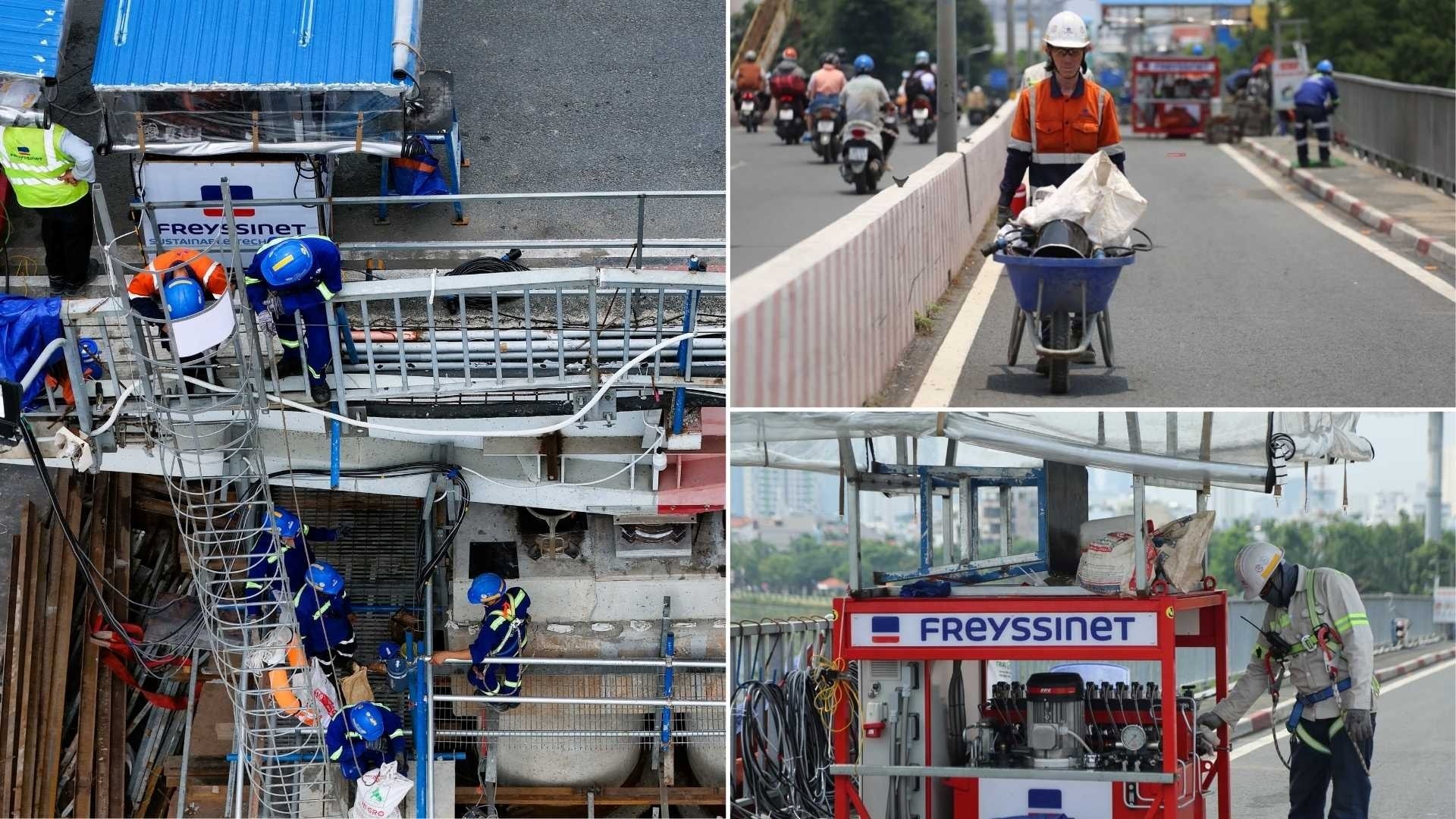
According to the Ho Chi Minh City Department of Construction (project investor), this solution resembles the “genie” technique used in house lifting but is significantly more complex, saving thousands of billions compared to new construction.
The most challenging phase is the lifting, lasting about a month, followed by two months of reinforcement and load testing before reopening. Upon completion, the bridge will achieve a 7-meter clearance, aligning with Bình Triệu 2 Bridge and preventing previous vessel collision issues.
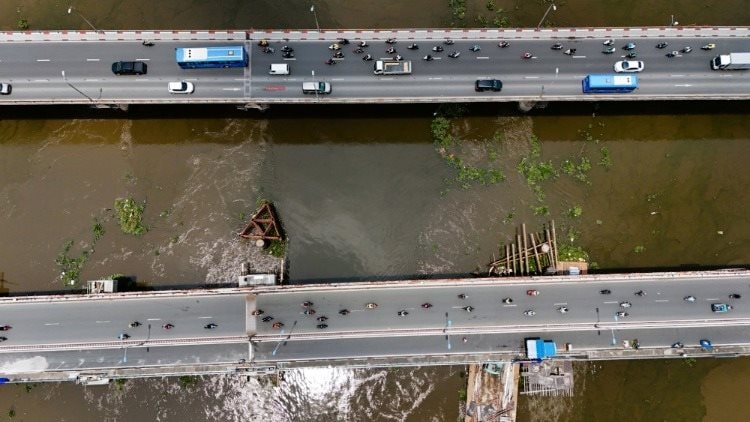
To maintain traffic flow, cars are redirected to Bình Triệu 2 Bridge, while motorbikes continue using Bridge 1 via a flexible steel temporary bridge system during the lifting process.
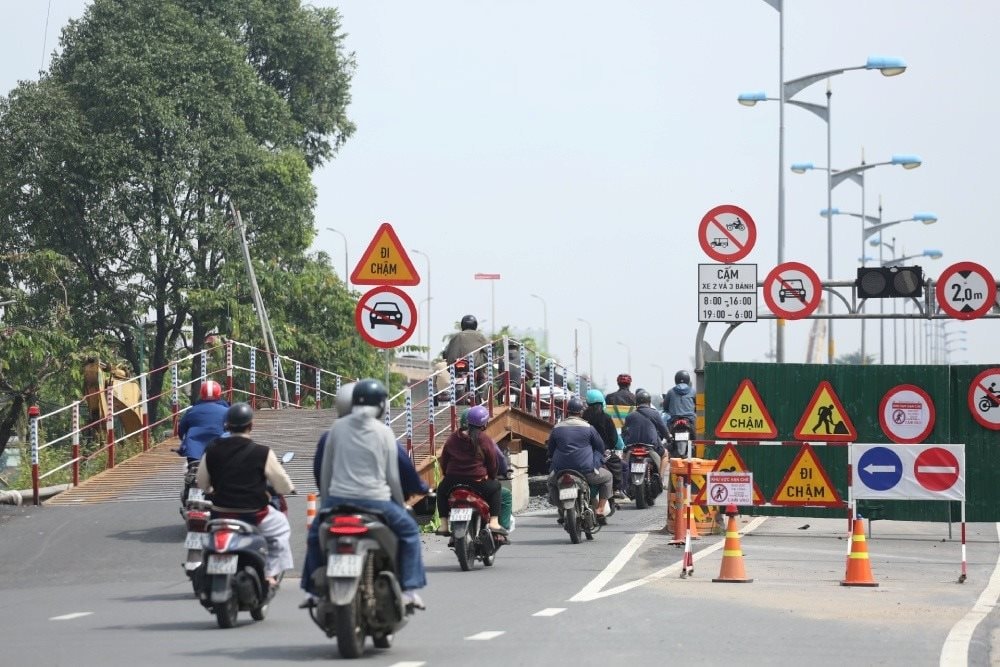
The temporary bridge is designed in two sections, connected by hinges; one end is fixed at the bridge abutment, and the other rests on the lifting span. As the main span reaches 1.07 meters in height, the temporary bridge acts as a flexible joint, ensuring safe and smooth passage for motorbikes over the height difference.
In addition to Bình Triệu 1 Bridge, Ho Chi Minh City is preparing to elevate Bình Phước 1 Bridge on National Highway 1, connecting Thu Duc and the former District 12. This 760-meter bridge will be raised by 1.25 meters to achieve a minimum 7-meter clearance, with a total investment of 111 billion VND.
Which Company is Behind This?
In January 2025, the Road Infrastructure Management Center under the Ho Chi Minh City Department of Transport announced the winning bidders for two bridge clearance enhancement packages, totaling 190.88 billion VND. Freyssinet Vietnam Co., Ltd. is part of both winning consortia.
For Package 14, Construction and Traffic Management during Construction of the Bình Phước 1 Bridge Clearance Enhancement Project on National Highway 1, the winning bid by the consortium of Vinh Hung Construction Consulting and Trading JSC – Freyssinet Vietnam Co., Ltd. was 89.345 billion VND (estimated at 90.311 billion VND).
For Package 12, Construction and Traffic Management during Construction of the Bình Triệu 1 Bridge Clearance Enhancement Project on National Highway 13, the winning bid by the consortium of HNS JSC – Freyssinet Vietnam Co., Ltd. was 101.536 billion VND (estimated at 102.677 billion VND).
Thus, Freyssinet Vietnam Co., Ltd. is involved in the consortium undertaking the Construction of the Bình Triệu 1 Bridge Enhancement Project with a package value of 102 billion VND and is also part of the upcoming Bình Phước 1 Bridge Enhancement Project.
Freyssinet Vietnam is a 100% foreign-invested company owned by the Soletanche Freyssinet Group.
The Soletanche Freyssinet Group is a leading construction conglomerate in France. Its founder, Eugène Freyssinet, is regarded as the “father” of prestressed technology, one of the group’s core strengths.
Freyssinet began exploring the Vietnamese market in the early 1990s and officially registered its tax code in 2003.
Freyssinet Vietnam specializes in New Construction & Renovation, Upgrading Structures—Transportation (bridges, roads), Civil, and Industrial. Specifically: cable-stayed systems, prestressed structures, expansion joints and bearings, seismic devices, ground anchors, heavy lifting & large structure installation.
The company has participated in numerous landmark projects such as Thu Thiem 2 Bridge (Ho Chi Minh City), high-rise buildings like Keangnam Landmark Tower and Indochina Plaza Hanoi, Hai Van Tunnel, Ba Son Bridge, My Thuan 2 Bridge, and the Upgrade and Expansion of the Y-shaped Bridge (Ho Chi Minh City).
SonKim Land and KSF Consortium Eye Bidding for 3,790 Resettlement Apartments in Thu Thiem
On September 11th and 16th, SonKim Land (CTCP Bất động sản Sơn Kim) and the consortium of Sunshine Group (CTCP Tập đoàn Sunshine, HNX: KSF) and DIA Investment (CTCP Đầu tư DIA) submitted proposals to participate in the auction for 3,790 apartments across lots R1, R2, R3, R4, and R5 in An Khánh Ward, Ho Chi Minh City.
The Saigon Riverside Avenue: The New Lifeline of Ho Chi Minh City’s Northeast
The Saigon Riverside Route, stretching from National Highway 13 to Vinh Phu 40, has been approved for a transformative upgrade, expanding to a width of 32 meters. With a total investment of 5 trillion VND, this project is set to unfold between 2025 and 2030. Anticipated as the “new lifeline” of Ho Chi Minh City’s Northeast region, it promises to usher in an era of modern riverside urban development.

